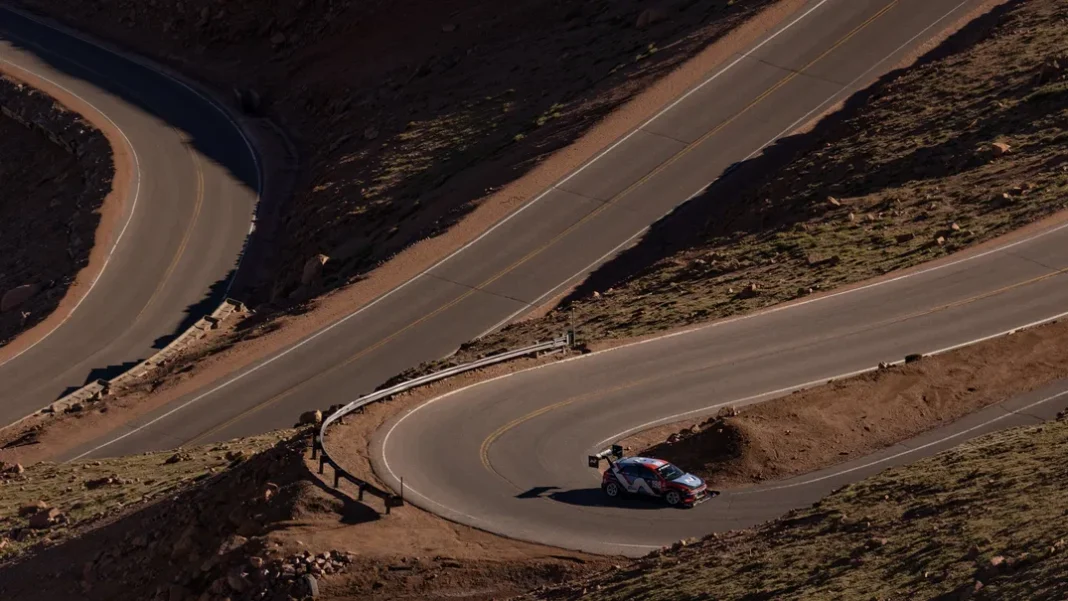Every motorsport discipline has its crown jewel: Monaco for Formula 1, Le Mans for endurance racing, Daytona for NASCAR, and the Isle of Man TT for motorcyclists. But tucked high in the rugged mountains of Colorado lies a different kind of proving ground — one that’s as brutal as it is beautiful. The Pikes Peak International Hill Climb isn’t just another race; it’s a relentless battle against gravity, altitude, and the limits of engineering.
On June 22, 2025, the legendary race will mark its 103rd edition, continuing a tradition that began over a century ago. Though it may not carry the global glamor of its European cousins, in the world of motorsport, Pikes Peak is a rite of passage — one that transforms both vehicles and drivers into legends.
What Is a Hillclimb, Anyway?
At its core, hillclimbing is a motorsport stripped to its essentials. No wheel-to-wheel duels, no pit stops — just man and machine racing against the clock, uphill. Originating in the earliest days of motoring, when coaxing early automobiles up even modest gradients was cause for celebration, hillclimbs today are defined by their raw, time-trial format.
In the UK, events like the Shelsley Walsh or Goodwood Hillclimb offer short, scenic sprints through wooded estates. But Pikes Peak is on a different scale entirely — more alpine assault than garden party sprint.

Welcome to Pikes Peak
Pikes Peak, towering at 14,115 feet above sea level, is part of the mighty Rocky Mountains and sits about 60 miles south of Denver, Colorado. The road to the summit is infamous: 12.42 miles of asphalt twisted into 156 turns, with sheer drops and few guardrails. The start line, already 9,390 feet up, pushes competitors into an oxygen-starved environment where both humans and combustion engines struggle to breathe.
The thin air doesn’t just sap strength — it transforms performance. Internal combustion engines lose power as they climb, but electric vehicles remain unaffected by altitude, giving them a growing edge in recent years.
A Century of Ascent
The race traces its roots back to 1916, one year after the road to the summit was completed. Initially envisioned as a promotional stunt to draw attention to the new road, the Hill Climb quickly gained traction. For decades, it remained a mostly American affair, a playground for homemade hot rods, early sports cars, and eventually motorcycles.
By the 1980s, however, the mountain caught the attention of global automakers. Audi and Peugeot famously turned the race into a European battleground, while the 1990s and early 2000s saw Japanese giants like Toyota and Suzuki dominate the peaks. Electric vehicles also made sporadic appearances during this era, foreshadowing the EV surge that would come in the 2010s.
Motorcycles, once a staple of the race, were removed from competition after 2021 due to increasing safety concerns — not surprising given the perilous cliffs and fickle mountain weather.
Evolution of the Course
Up until 2001, the race took place entirely on gravel, adding another layer of chaos to the event. But beginning in 2002, the road was gradually paved — a process completed by 2012. This change dramatically altered the nature of the race. Where once rally-style vehicles and off-roaders reigned, the newly tarmacked surface opened the door to more track-focused machinery and precise, aerodynamically enhanced vehicles.
The change didn’t just improve grip — it made the course faster and even more demanding, pushing drivers to take risks they might never consider on loose gravel.

Vehicles That Tame the Mountain
Pikes Peak is known for its eclectic mix of entries. The marquee category is the Unlimited class, where the rules are few and creativity is boundless. This is where you’ll find the wildest machines: custom-built monsters with wings large enough to generate aircraft-level downforce, turbocharged beasts barely resembling anything road legal.
Yet, the event is far from a one-class show. Time Attack divisions cater to near-stock performance cars, while GT, open-wheel, and electric classes offer variety and innovation. There’s even an exhibition category for experimental technology and off-the-wall concepts.
In past years, the lineup has included everything from full-size Freightliner trucks to futuristic EVs like the Hyundai Ioniq 5 N TA and Ford’s cutting-edge Mustang Mach-E — entries that blur the lines between motorsport and science fiction.
The Man and the Machine to Beat
Since its inception, the Pikes Peak Hill Climb has created countless legends, but one name now stands above the rest: Romain Dumas. A two-time Le Mans winner, Dumas shattered the all-time course record in 2018 behind the wheel of the Volkswagen ID.R — a sleek, all-electric prototype developed specifically for the mountain.
His blistering time of 7:57.148 remains the only sub-eight-minute run on the full paved course. No one has come close since. In 2025, he’s back again, this time piloting Ford’s new Super Mustang Mach-E, aiming for a sixth overall win. If history is any guide, you wouldn’t want to bet against him.

Why Pikes Peak Still Matters
In an era of sanitized tracks and highly regulated racing series, Pikes Peak is a glorious outlier — a throwback to a time when danger and drama went hand-in-hand. Here, innovation thrives not in committee meetings but in garages and wind tunnels, where engineers and dreamers push the envelope for the sake of a few precious seconds.
There are no safety cars, no second chances. Just a single run to the top, where victory is measured in milliseconds and mistakes can be fatal. It’s this purity — the raw, unfiltered nature of the challenge — that keeps manufacturers and madmen alike coming back year after year.
For those who dare, Pikes Peak offers a shot at immortality. For the rest of us, it remains one of the most captivating spectacles in motorsport — where the only way forward is up.




